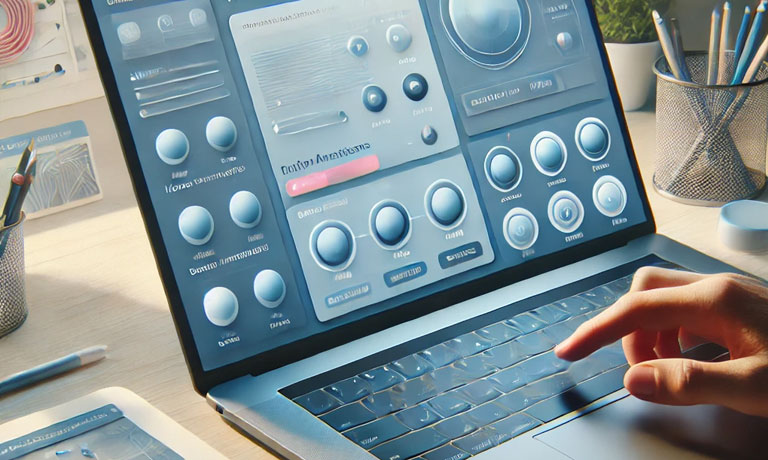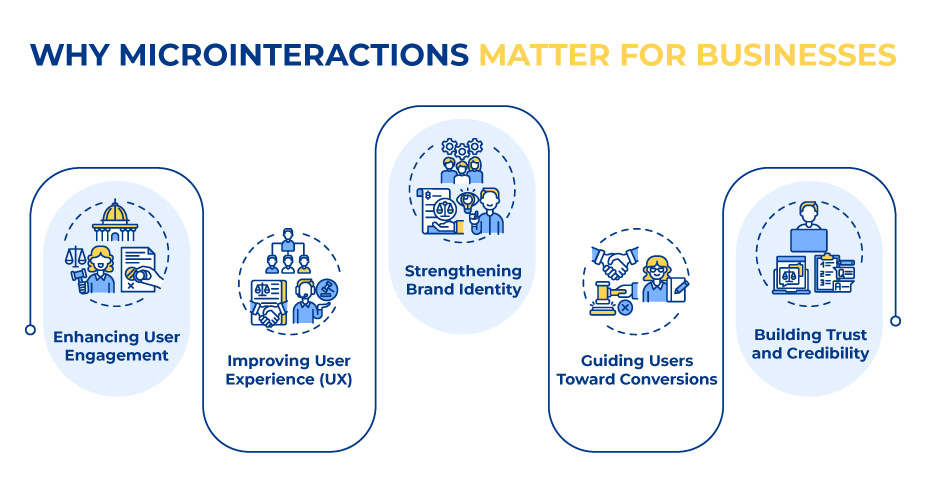Share Article :
Introduction

In today’s competitive digital landscape, businesses must go beyond static web design to engage users effectively. One of the most powerful yet often overlooked design elements is microinteractions. These small animations or visual responses play a crucial role in enhancing user experience, making websites more interactive, engaging, and user-friendly. This article explores how microinteractions improve web design, why they matter for business and marketing professionals, and how they can elevate brand perception and customer engagement.
What Are Microinteractions?
Microinteractions are subtle design elements that respond to user actions, providing feedback, guidance, or an enhanced sense of interactivity. Common examples include:
These micro-level interactions create an intuitive and seamless experience, making the website
feel more dynamic and engaging.
Why Microinteractions Matter for Businesses

For business and marketing professionals, microinteractions are not just a design trend—they directly impact customer perception, engagement, and conversions. Here’s why they matter :
- Enhancing User Engagement
Websites with interactive elements keep visitors engaged longer. Small animations create a sense
of interaction, making the browsing experience more enjoyable. This leads to lower bounce rates
and higher conversions. - Improving User Experience (UX)
A smooth, intuitive website experience enhances customer satisfaction. Microinteractions help users understand how a website works without needing instructions, reducing frustration and improving navigation. - Strengthening Brand Identity
Well-designed microinteractions reinforce brand personality. Whether it’s playful animations for a fun brand or sleek transitions for a corporate website, these small details create a lasting impression. - Guiding Users Toward Conversions
Microinteractions can subtly direct users to take desired actions. For instance, a shaking login button after an incorrect password entry encourages users to re-enter their credentials correctly. - Building Trust and Credibility
A professional, polished website with interactive elements signals credibility. Visitors are more likely to trust a well-designed website than a static, outdated one.
How to Implement Microinteractions Effectively
While microinteractions enhance the user experience, they should be implemented thoughtfully to avoid overwhelming users. Here are best practices for integrating microinteractions into your website:
Conclusion
Microinteractions may seem like minor design elements, but their impact on user experience and business success is significant. They engage users, improve website navigation, enhance brand perception, and ultimately drive conversions. For businesses and marketers, investing in welldesigned microinteractions can set a website apart from the competition and create a lasting impression on visitors. Want to enhance your website’s user experience with microinteractions? Contact us at WebAgency.com.my to explore how we can elevate your digital presence.
Share Article :
